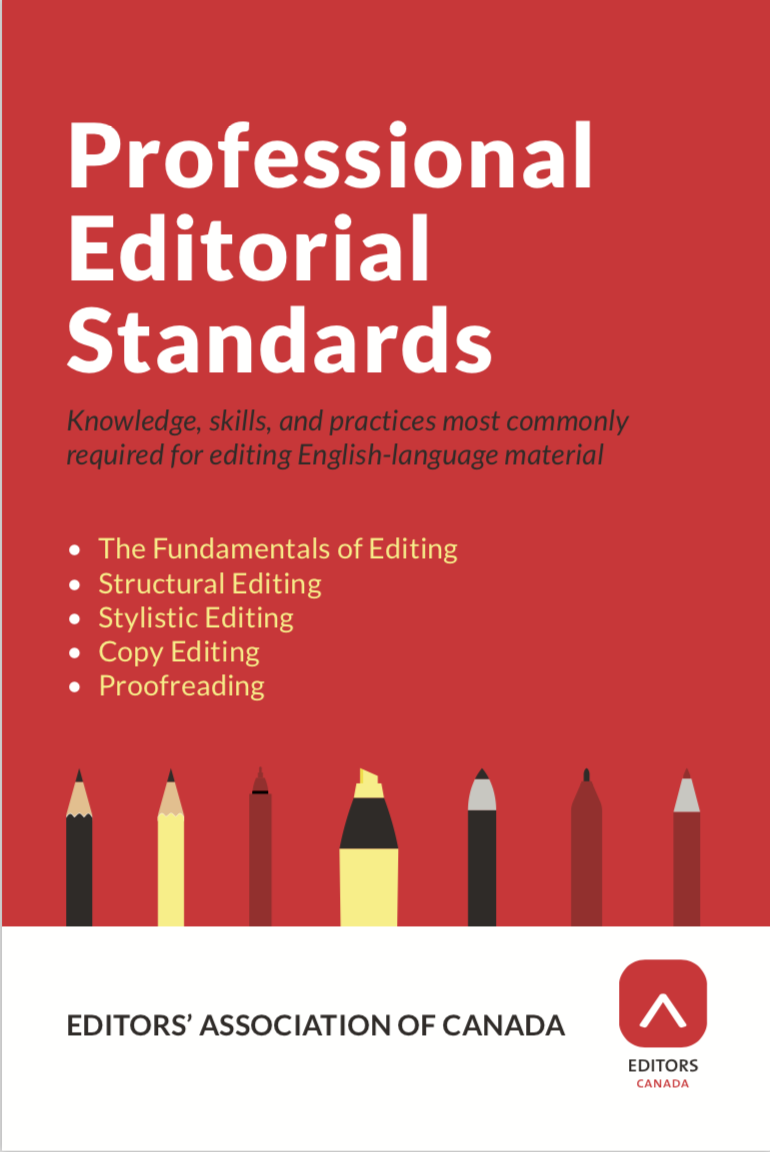
“I’m talking about making something less boring.”
This was feedback from an Editors Canada member on a draft of the latest update to Editors Canada’s Professional Editorial Standards (PES). The 2016 update was a year-long process that incorporated feedback and comments from many members. When a draft of the new text was circulated for final input, this member felt that something was still missing. In the 2009 edition, standard C11 read:
Establish or maintain a consistent tone, style, and authorial voice or level of formality appropriate for the intended audience and medium.
The member explained, “That still doesn’t cover it. A large part of the stylistic editing I do is to help the client keep the reader’s interest. For example, I was recently hired to make a company’s insurance benefit documents interesting. They were so dull that nobody was reading them, so employees had no idea what they were entitled to.”
The team in charge of updating PES considered. Was this kind of editing already covered by standard C11? Eventually they revised the standard to this:
Establish, maintain, or enhance tone, mood, style, and authorial voice or level of formality appropriate to the content and for the intended audience, medium, and purpose (e.g., making text more engaging or entertaining).
PES is a unique document that describes in detail the parameters of editing work. Its audience is editors and the people who work with, train, and certify them. As the work of editing has changed, the Standards have been updated, with the latest revision released just over a year ago.
The 2016 updates to PES reflect evolutions in technology and in the contexts in which editors work. Thus, the new version includes references to multimedia content like video, audio and alt text, as well as to tools for electronic editing like PDF markup and track changes.
Other revisions, like the one above, reflect not so much changes in the nature of editing as a maturation of PES itself, with clearer wording and better examples. Similarly, the updated version of PES is more explicit about one of the most subtle aspects of editing: knowing when not to edit. Standard A8.1 (in the Fundamentals section) says “Use editorial judgment when deciding whether to intervene, leave as is, query, change, or recommend a change,” and copy editing standard D2 says, “Know when exceptions [to rules] can be made (e.g., in fiction or advertising copy).”
The Editors Canada Standards Communication Task Force has the job of keeping the conversation about PES going. We’re planning a series of posts on The Editors’ Weekly about the sometimes surprising ways that the Standards are reflected in editors’ work in a variety of contexts. We’ll examine some standards in more detail, and talk to editors about how they apply those standards in their work.
In the meantime, we invite your comments and questions about PES and its latest revision. Do you refer to the standards? Why or why not? Do the latest revisions reflect changes in your editing work? Is there something missing from the standards that you find yourself doing, or conversely, are there standards that don’t seem to apply to your work at all? Do you have an interesting example of a particular standard in practice?
___
The Editors’ Weekly is the official blog of Editors Canada. Contact us.
Discover more from L'HEBDOMADAIRE DES RÉVISEURS
Subscribe to get the latest posts sent to your email.
